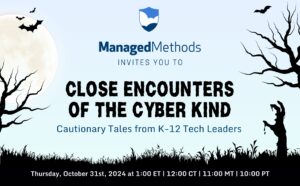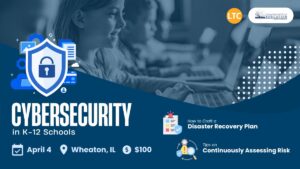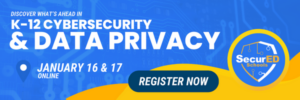When you’re blindsided by a sudden cyber attack, it pays to have a band of heroes you can call upon to save the day. Fortunately, that’s exactly what a cyber incident response team (CIRT) is for.
Think of them like the Avengers. They might not protect your universe from alien invaders, but they do keep malicious cybercriminals at bay.
Let’s uncover the basics of CIRTs and how you can build the best team for your district’s cybersecurity needs.
WHAT IS A CYBER INCIDENT RESPONSE TEAM?
A cyber incident response team — also known as a computer incident response team or computer security incident response team (CSIRT) — is a group of people responsible for responding to security breaches, viruses, and other potentially catastrophic cyber threats.
CIRTs are essential to the overall incident response process. Each security team member plays a particular role in mitigating an active threat, but together, they cohesively executive your school district’s incident response plan (IRP).
In short, an IRP is a formal document that establishes the requisite steps, instructions, and procedures your school district should follow for detecting, containing, and minimizing the impact of an attack on your information technology (IT) infrastructure. Generally speaking, incident response planning provides a comprehensive framework for mitigating a cyber incident, whether it be a security breach, data leak, or any other threat to sensitive information and student privacy.
With a well-crafted IRP, you can:
- Jump into action: Incident response planning helps you act faster, which is key to preventing bad actors from getting their paws on more personal information.
- Prevent downtime: The sooner you contain a threat, the quicker you can bring affected systems back online. And, if you’re really fast, you can even prevent the attack from forcing information technology offline in the first place.
- Improve recovery: With a smoother and more effective incident response process, you can avoid critical damage that requires implementing a disaster recovery plan.
However, these outcomes aren’t possible without a computer security incident response team at the helm. A CIRT’s main goal is to regain control of an ongoing cyber incident as quickly and efficiently as possible, thereby minimizing its negative impact. This involves following the National Institute of Standards and Technology (NIST)’s four-step framework for incident handling:
- Preparation
- Detection and analysis
- Containment, eradication, and recovery
- Post-incident activity
Not familiar with these phases? Check out our guide to learn more.
For now, just know the CIRT is responsible for completing each phase’s essential procedures. These include gathering threat intelligence, communicating events to internal and external stakeholders (such as law enforcement), classifying incidents, threat hunting, coordinating response efforts, post-incident reporting, and updating information security policies following a mitigated cyber threat.
Contact your dedicated Account Manager:
Warren Frebel 
VP of Business Development
303-415-3656
wfrebel@managedmethods.com
Learn More About ManagedMethods















